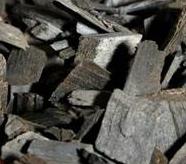 Torrefaction is a mild pyrolysis process (250-350°C) in many aspects resembling the roasting of coffee beans. Done right, the biomass is refined into a higher value “instant coffee-like” product, also with a “refreshing” aroma. This smokey biomass scent might well soon be as familiar to all of us as the well-known “smell of money” steaming from the Nordic pulp mills.
Torrefaction is a mild pyrolysis process (250-350°C) in many aspects resembling the roasting of coffee beans. Done right, the biomass is refined into a higher value “instant coffee-like” product, also with a “refreshing” aroma. This smokey biomass scent might well soon be as familiar to all of us as the well-known “smell of money” steaming from the Nordic pulp mills.
During the last ten years a tremendous R&D effort from a multitude of committed torrefiers has paved the way for an army of different emerging torrefaction technologies. Scientists and engineers have gathered extensive experimental data on how varying biomass raw materials all benefit from torrefaction. The process generally increases bulk energy density; calorific value; water resistance; and the product can easily and efficiently be densified into pellets or briquettes and/or ground into powder. Biological activity is terminated, reducing risk of degradation.
Why has the progress been so slow
Despite the positive results obtained, an ounce of frustration is emerging. Frustration by the time it takes; by the lack of industrially produced tonnages; by the lead times and the paper work needed to get up and running; by product safety and environmental permit formalities related to new materials and processes;by the present high costs estimates of processes and torrefied materials; and also in several cases by technical issues not foreseen.
“Drying and drying some more” – it looked quite simple, attracting a hurdle of both serious developers and fortune hunters. However, it’s a bit more complex than anticipated. Torrefaction has to be done both smart and cost-efficiently for full commercialization progress. We can thus expect that most of the initiatives will still experience severe challenges and several will also ultimately fail. Although not at all rocket science, there are actually a number of technical process and system challenges that need careful R&D and smart solutions such as: raw material handling; process containment and control of atmosphere; generation of inertization gas; process control and product quality; heat transfer; control of temperature and residence time; moderationofthe exothermal reactions; product cooling; torrefaction gas behavior, fouling and utilization; process and system integration; energy &exergy optimization; and whole supply chain optimization.
Of all the 60 claimed torrefaction initiatives and of all large-scale plants scheduled for start-up 2010 and 2011 (15+),quite few are erected and hardly any has yet reached full stable industrial production and commercial status. It is obvious that the promises and thus expectations of start-up were initially set too high. We can conclude that most suppliers tended to exaggerate their capacities and underestimate time and efforts needed.Developers with limited experience of biomass materials also found them-selves struggling with “simple” challenges such as feeding, transport, storage and raw material quality, as well as with high total costs.
Time fordemonstration of entrained flow gasification of torrefied biomass materials
In November 2011, ETC, Meva,BioEndev and Umeå University carried out the first gasification tests of torrefied spruce in the Meva 0.5 MW cyclone gasifier.
Co-firing may also be the solution to the chicken or the egg dilemma for production of green liquid fuels and chemicals. The coal replacement market is huge and already existing. Dedicated biomass-to-liquids (BTL) systems can then be developed and demonstrated based on market and technologies already here for coal.
A few gasification tests of torrefied biomass have already been performed, and many more are planned. There are reasons to believe that the major BTL challenges – feeding and ash behavior – can be overcome and the initial results look promising. However still quite some time and R&D efforts remain for the development of optimized systems and for a sufficient amount of demonstrated operating hours. Much work will be focused on process and system analysis and integration. It is reasonable also to believe that decentralized pretreatment (torrefaction) plants will be accompanied by larger centralized gasification and synthesis plants.
This post is based on an article by Anders Nordin, ETPC Umeå University, published in April 2012 in BE-Sustainable magazine.


